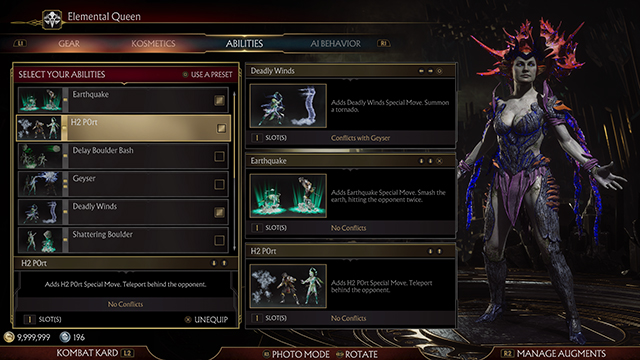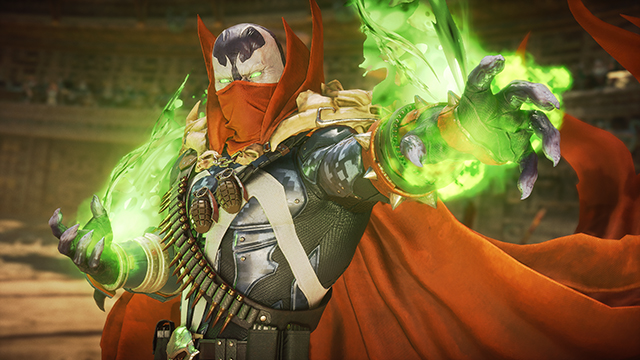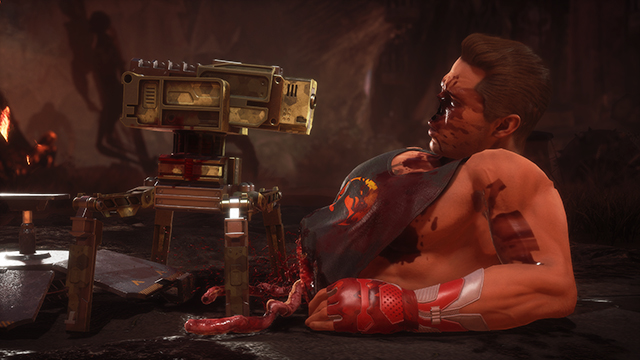Mortal Kombat 11 lived a longer life than past NetherRealm Studios games, but not a happier one. After nearly eight months of deafening silence, NetherRealm announced it was focusing on its upcoming mystery title and won’t be adding any more DLC to MK11 in the future. But lacking content was never Mortal Kombat 11’s problem; the 2019 fighter was always overflowing with modes to play and things to unlock. The true issue was that it never got the right kind of support it needed to reach its full potential and is therefore destined, in a few regards, to feel incomplete.
Mortal Kombat 11 had the best base of any NetherRealm game. Its visuals were far and away better than its predecessors thanks to its highly detailed and colorful environments and improved animation (which was a sore spot for earlier NRS titles). The gear system had been streamlined. Its Towers and tutorial modes were more involved than they’d ever been. The netcode is still some of the best in the entire genre. Its solo campaign mixed old and new in thoughtful ways that both commented on the series’ past while paving the way for an interesting future.
The most important bit — the actual fighting mechanics — had also been overhauled and is where NRS made the boldest changes. NetherRealm toned down the rushdown, 50/50 style from Mortal Kombat X and went for a slightly more neutral-heavy approach that felt like a decent middle ground between Injustice and MK. It even had more customizable moves, building on the Variation system in MKX. Tying the super move to health and splitting the meter into offensive and defensive chunks encouraged players to use all of its mechanics, as linking everything to one meter in previous entries often meant some systems went unused. Mortal Kombat 11 was a fighting game that went in a different direction and seemed designed to address the shortcomings of its predecessors.

Well, that was the plan, as the game didn’t fully execute on those ideas in practice. There were a lot of incomplete characters and half-baked mechanics and this is most evident in the suite of customizable moves. Carving fighters into pieces often meant that they were missing tools they needed to be competitively viable or interesting. High-tier characters made this clear as they most likely had default moves that gave them an upper hand.
The dream of creating different versions of a single character was never fleshed out since a big chunk of the roster couldn’t afford forgoing certain strings or specials. The opposite was true as well since some had custom moves that were so overpowered that choosing anything else would just be foolish. Because of these extremes, a vast majority of the custom abilities went unused and made the push for customizability ring hollow.
NetherRealm did eventually introduce custom Variations into tournament settings but didn’t properly adjust the game to fit such a radical change. The malnourished bones of the Variation system were still there when customs came, meaning incredible moves that were previously balanced around being paired with mediocre ones no longer had such downsides. Some characters had objectively superior Variations (like the one in the above picture) while others were hobbled unless they picked certain moves. These problems existed before customs were patched in and continued to be a headache after because they were never properly examined in the first place.
Both polar opposite outcomes rip out the choice that’s supposed to be its beating heart and such inequality was hardly equaled out. It seemed as though NetherRealm was going to see how things played out and adjust frame data or slot values accordingly, but the team never took that crucial next step. And as such, custom Variations — which are a central feature of the game — still feel like they’re in beta.

Mortal Kombat 11 also had system-level issues that never got changed, despite years of constant feedback. The combo breaker-like Breakaway system has been a hot topic since the game’s reveal in January 2019. It favors some characters over others and has an awkward input that’s too easy to accidentally use. But NetherRealm stubbornly never actually addressed any of its issues. Armor-breaking moves that counter Breakaways seemed like some sort of compromise, but, again, even those were unbalanced, built with the now-gone Variation system in mind, and hardly tweaked after implementation.
This was just the tip of the iceberg as this is just one of the structural problems the community has consistently pointed out since launch. This extends all the way to the passive meter system, uneven distribution of Krushing Blows, scrubby nature of Fatal Blows, rampant online toxicity, poor point system in Kombat League, and lack of a WiFi filter. Almost none of these features were meaningfully looked into, if at all. NetherRealm’s abysmal communication with the fans and the many months between patches were also factors that made it appear like NetherRealm didn’t care about feedback from pro and casual alike.
And when there are that many core problems that could use tweaking, it doesn’t matter how much content is being added to the game. Spawn has been one of the most-requested fighters in the series’ history yet his inclusion didn’t make Breakaways less clumsy. Having 12 DLC fighters instead of eight or nine didn’t change the fact that the online multiplayer didn’t have a WiFi filter. Aftermath was an enjoyable story-based expansion, but it was a lot of work for something with minimal long-lasting benefits.
NetherRealm usually prioritized adding content to Mortal Kombat 11 over fixing its foundation, a misguided approach that puts profits far above the long-term health of the game. The studio did support the game, but “support” is not always synonymous with paid DLC, which can often be a capitalistic perversion of what actual support is. The balance and quality-of-life patches the team put out were often too weak and spread too far apart to have the impact they needed to have. Even though it became somewhat of a meme, Ubisoft’s Operation Health for Rainbow Six Siege had its head in the right direction as it acknowledged the fact that a game can’t healthily live if its heart is filled with tumors. And tumors like that only grow and become more cancerous with time.
NetherRealm did not make a bad fighting game. In many regards, Mortal Kombat 11 is a pretty great one. But it had the potential to be an excellent fighter that tapped into its full power and became the game that it always hinted at being. Since there are no plans for more balance patches, it appears as though Mortal Kombat 11 is content settling with its assortment of underdeveloped systems. Hopefully, NetherRealm realizes next time around that post-launch DLC doesn’t make a game great; it’s the post-launch TLC that makes all the difference.










